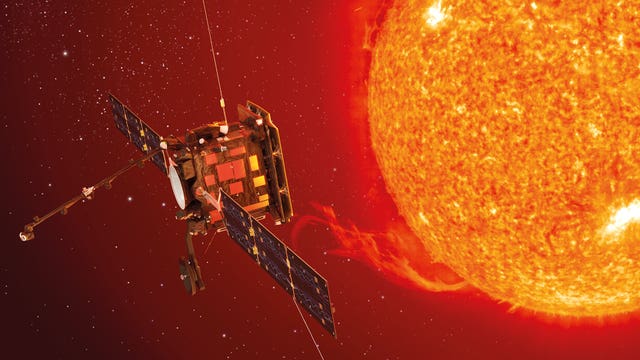
The Solar Orbiter, a spacecraft designed and built in the UK, is ready for its journey to the Sun in a mission to unlock its secrets.
It is expected to be launched into space in the Atlas V 411 rocket from Nasa’s Cape Canaveral site in Florida next week.
Here is everything you need to know.
What is the Solar Orbiter’s mission?
#SolarOrbiter will launch in the early hours of Monday morning (Central European Time).
Find out more about how it will get to the Sun, with the help of a couple of Earth, Venus and teams here at #MissionControl
👉https://t.co/i3UJNKSsO7 pic.twitter.com/sUm8dEyOXE
— ESA Operations (@esaoperations) February 6, 2020
The Solar Orbiter will help scientists understand more about the Sun and its influence on the Solar System as part of the European Space Agency (ESA) mission.
The mission will also help answer questions such as how the Sun’s magnetic field is generated, how flares and other eruptions produce the energetic particles that lead to extreme space storms.
Big space storms have the ability to disrupt electrical equipment and power grids on the ground and put satellites at risk.
Predicting when these storms occur could help the governments and companies protect these satellites and other communications infrastructure.
What role did the UK play?

Scientists in the UK helped design four of the 10 instruments on the Solar Orbiter, while the UK Space agency provided £20 million of funding for the £1.3 billion project.
The design and implementation of the spacecraft was undertaken by aerospace company Airbus in Stevenage.
Chris Lee, the UK Space Agency’s chief scientist, said: “Solar Orbiter is the most important UK space science mission for a generation, both because of its leading roles for UK science and industry but also because of the crucial information it will give us about living near a star like the Sun.”
How will the spacecraft reach the Sun?

The spacecraft will take two years to reach the Sun.
It will use gravitational force of Venus and Earth to adjust its trajectory, which will place it into an elliptical orbit around the Sun.
The Solar Orbiter will make a close approach to the Sun every five months, and at its closest will only be 26 million miles away, closer than the planet Mercury.
During these times, it will be positioned for several days over roughly the same region of the Sun’s surface, as the Sun rotates on its axis.
This will allow the orbiter to observe magnetic activity building up in the atmosphere that can lead to powerful flares and eruptions.
What will happen to the Solar Orbiter at the end of the mission?

The mission is expected to last 11 years. Once the Solar Orbiter runs out of fuel and power, scientists will lose all communication with the spacecraft.
It will then continue to orbit around the Sun somewhere between Mercury and Venus as a piece of space junk.


Comments & Moderation
Readers’ comments: You are personally liable for the content of any comments you upload to this website, so please act responsibly. We do not pre-moderate or monitor readers’ comments appearing on our websites, but we do post-moderate in response to complaints we receive or otherwise when a potential problem comes to our attention. You can make a complaint by using the ‘report this post’ link . We may then apply our discretion under the user terms to amend or delete comments.
Post moderation is undertaken full-time 9am-6pm on weekdays, and on a part-time basis outwith those hours.
Read the rules here